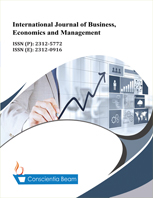Dutch Disease: Myth or Reality? An Analysis of the ARDL Model
DOI:
https://doi.org/10.18488/journal.62.2019.63.130.140Abstract
The theory of Dutch disease has existed in literatures since the 1960’s. The concept has developed and has been attributed to the increase in pernicious distributive struggle of resources and rent seeked by various equally powerful groups, which resulted in a decline in investment levels and growth rates. This concept is applicable to the Nigerian economy as Nigeria is a mono-product economy depending solely on crude oil. This paper differs from others as a different model (ARDL model) is used to analyze the extent of Dutch disease prevalent in Nigeria. The methodology can be applied irrespective of whether the time series is I(0), I(1) or frictionally integrated; the problem of endogeneity is avoided while the short run and long run parameters are estimated simultaneously. Data used spans the years 1980-2016, as it captures both long run and short run relationships effectively. The stationarity test depicts stationary at I(1) taking into consideration two lags. In addition, the long run and short run relationships were established through the bound test since the computed F statistic is higher than the upper boundary. Analysis suggests that the relationship between effects of oil production on the balance of payments and exchange rate in Nigeria extends to the long run. The results showed that for every unit change resulting from the balance of payment, oil price increased by 90% and for every unit change resulting from the exchange rate, oil price fell by 59%. This study supports the fact that the balance of payment and exchange rates are veritable ingredients to raise economic growth if maintained for the benefit of all. Therefore, the option of economic diversification should be seriously considered by the Nigerian government.

